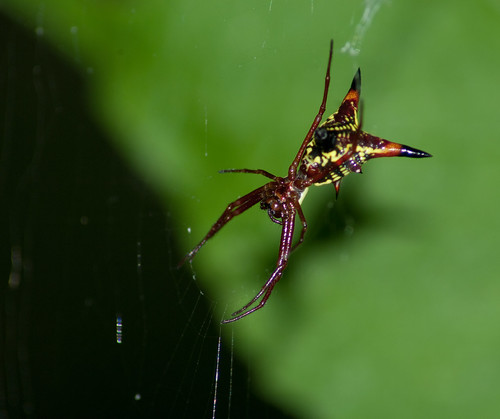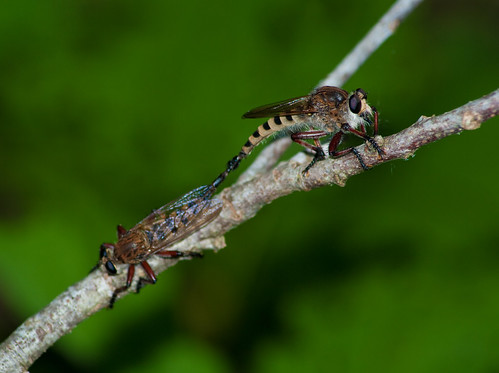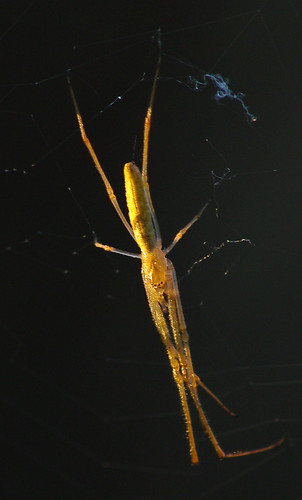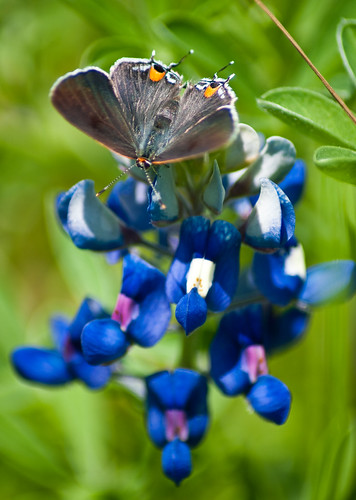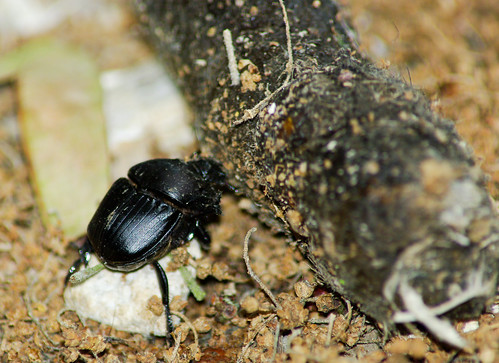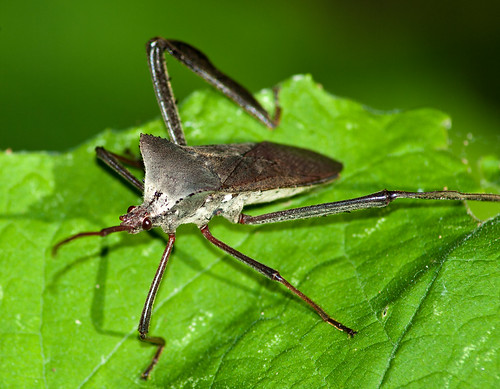
(Unidentified Leaf-footed Bug)
In Texas naturalist circles, each "season" (term used loosely to differentiate varying levels of "hot and humid") brings with it new things to see. While fall, winter and spring tend to be dominated by bird migrations, summer belongs to the 6- and 8-legged set.
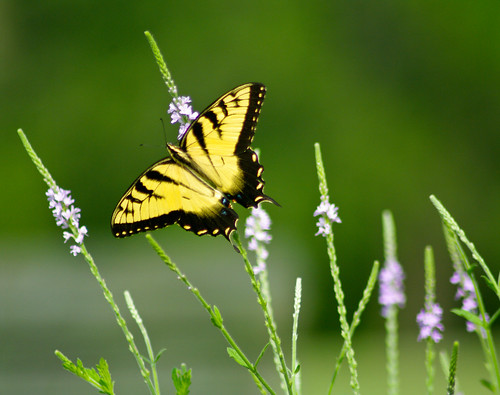
(Eastern Tiger Swallowtail, Papilio glaucus)
I preface this by saying: I am not an entomologist. I have done little if any formal academic delving into the realms of things creepy and/or crawly [1]. It wasn't until recently that the gateway drug of the larger species groups (birds, mammals, etc) drew me in and got me into the less fluffy corners of ecology [2].
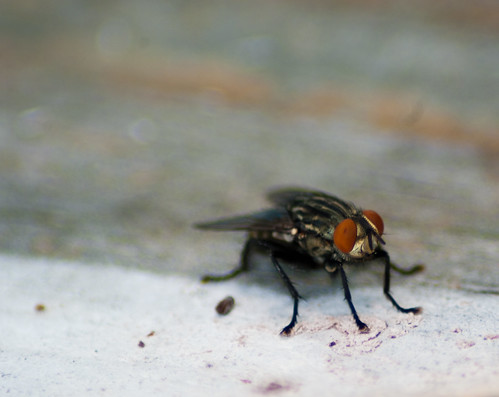
I preface this by saying: I am not an entomologist. I have done little if any formal academic delving into the realms of things creepy and/or crawly [1]. It wasn't until recently that the gateway drug of the larger species groups (birds, mammals, etc) drew me in and got me into the less fluffy corners of ecology [2].

(Flesh Fly, Sarcophaga sp.)
However, if one reaches the point where one is unable to find novelty in animalia, there will always be an endless progression of life happily chugging away on the micro end of the spectrum. It may not be as easy to anthropomorphize, but to me it is just as compelling in its alien character.
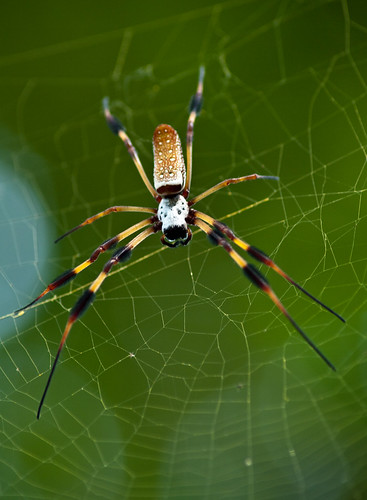
However, if one reaches the point where one is unable to find novelty in animalia, there will always be an endless progression of life happily chugging away on the micro end of the spectrum. It may not be as easy to anthropomorphize, but to me it is just as compelling in its alien character.

(Golden Silk Spider, Nephila clavipes)
Summer on the Gulf Coast is the empire of the insects and arachnids. A vast humid sauna of writhing foliage to explore. Summer brings an explosion of miniature life. The tree canopies are awash in swallowtails fluttering languidly in the hazy light, while beetles wing in to march like miniature juggernauts on an unfathomable mission across the landscape. Spiders proliferate in almost overwhelming density, weaving dense canopies along the tree break, feasting on this year’s crop of dragonflies, who flit about in vast swarms at the water’s edge. All kinds produce a staggering variety of displays and rituals to assure the passing on of their genetic material [3]. It’s an ongoing war of unimaginable carnage and unnoticed victories, empires rising and falling beneath our feet, and unending romantic conquests. Also, it’s just really cool.
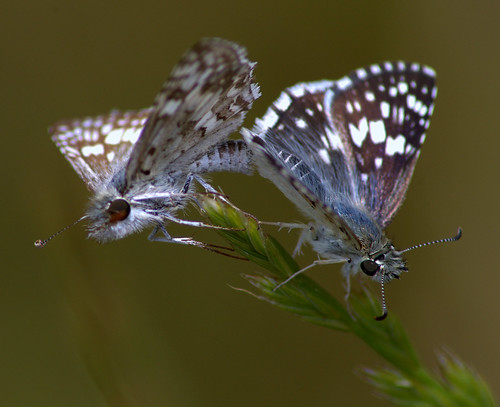
Summer on the Gulf Coast is the empire of the insects and arachnids. A vast humid sauna of writhing foliage to explore. Summer brings an explosion of miniature life. The tree canopies are awash in swallowtails fluttering languidly in the hazy light, while beetles wing in to march like miniature juggernauts on an unfathomable mission across the landscape. Spiders proliferate in almost overwhelming density, weaving dense canopies along the tree break, feasting on this year’s crop of dragonflies, who flit about in vast swarms at the water’s edge. All kinds produce a staggering variety of displays and rituals to assure the passing on of their genetic material [3]. It’s an ongoing war of unimaginable carnage and unnoticed victories, empires rising and falling beneath our feet, and unending romantic conquests. Also, it’s just really cool.

(White-checkered Skippers, mating)
In my ongoing desire to get better acquainted with the local species I have been purposefully setting aside time during local hikes to beat the brush and shift my perspective from the larger world to hidden miniature landscapes [4]. The preceding and following are some shots of new finds for me from recent hikes, mostly at Brazos Bend State Park (therefore, representing primarily bottomland forest, marsh/wetlands, and coastal prairie ecosystems). As always, click on a photo to see a larger version, or go to my flickr page to see a great many more.

In my ongoing desire to get better acquainted with the local species I have been purposefully setting aside time during local hikes to beat the brush and shift my perspective from the larger world to hidden miniature landscapes [4]. The preceding and following are some shots of new finds for me from recent hikes, mostly at Brazos Bend State Park (therefore, representing primarily bottomland forest, marsh/wetlands, and coastal prairie ecosystems). As always, click on a photo to see a larger version, or go to my flickr page to see a great many more.

(Four Spotted Pennant Dragonfly, Brachymesia gravid)
(unidentified moth)
(Robberflies mating, family Asilidae, unknown genus/species)
(Long-jawed orbweaver, unidentified species)
(Mexican Grey Hairstreak butterfly on Bluebonnet, Strymon melinus subspecies)
(Dung Beetle, unidentified species, with Dung.)
(Punctured Tiger Beetle, Cicindela punctulata)
Technical info: All photos taken with a Pentax K20d and Tamron 70-300mm with, ostensibly, a 1:2 max macro magnification. However, given the extra magnification/”cropping” of a smaller digital sensor, that magnification is understated. When I go out to work specifically with macro, I often use a full tripod and macro setup, including a dedicated flash, and combination Pentax 50mm f/1.4 manual lens (old school glass and metal, no better lens available in my book) and Vivitar 2X Macro-focusing teleconverter, which produces an equivalent 100mm f/2.8 manual macro lens. Since AF works relatively poorly with small subjects and infinitesimal depths of field, I don’t mind the manual at all. I plan to experiment with a reversing ring to see if it gets better results, as the vivtar image quality is less than then 50mm prime lens. However, for hiking purposes, the 70-300mm, especially when taken at the 250mm range at f/8 or higher is more than adequate, and has the benefit of giving a longer working distance (i.e. I can be farther away from the subject, which is great for spookable subjects like butterflies, etc)All photos copyright Justin Bower.
Technical info: All photos taken with a Pentax K20d and Tamron 70-300mm with, ostensibly, a 1:2 max macro magnification. However, given the extra magnification/”cropping” of a smaller digital sensor, that magnification is understated. When I go out to work specifically with macro, I often use a full tripod and macro setup, including a dedicated flash, and combination Pentax 50mm f/1.4 manual lens (old school glass and metal, no better lens available in my book) and Vivitar 2X Macro-focusing teleconverter, which produces an equivalent 100mm f/2.8 manual macro lens. Since AF works relatively poorly with small subjects and infinitesimal depths of field, I don’t mind the manual at all. I plan to experiment with a reversing ring to see if it gets better results, as the vivtar image quality is less than then 50mm prime lens. However, for hiking purposes, the 70-300mm, especially when taken at the 250mm range at f/8 or higher is more than adequate, and has the benefit of giving a longer working distance (i.e. I can be farther away from the subject, which is great for spookable subjects like butterflies, etc)All photos copyright Justin Bower.
Notes
[1] The commonly accepted progression in naturalism, as I had alluded to in previous posts at my other blog, tends to follow one of two primary vectors…either from birds to butterflies to dragonflies to insects in general, or from mammals to reptiles and amphibians to insects. There is no scientific basis for this claim, only the anecdotal evidence of every naturalist I have met and worked with.
[2] “fluffy ecology”, i.e. interest and care for life forms based solely on the “cute” factor is understandable, if ill-advised. This factor is a pretty decent hurdle for entomology, I’d assume. It’s one thing to get people to learn about cuddly bobcat kittens. It’s another to overcome the “GETITOFFME”s involved with close contact with the fairly alien world of insects and arachnids. As much as I love spiders, I still have shivers of dread in the vestigial reptile portions of my brain when they cross the somewhat ambiguous comfort boundary between us (i.e. being on me unawares.)
[3] Most of which seem to involve repeatedly thumping into my window, face or other inanimate objects mid-coitus. Evolutionarily speaking…well, thank goodness there are a lot of you.
[4] As dorky as it may sounds, there’s nothing I like better than knowing relatively nothing about a group of life and then trying to wrap my head around its entirety all at once by diving head first into it through direct exploration. However, unlike the relatively finite number of bird species, insects may make this approach somewhat more challenging with their sheer variety and tendency for whole families of them to be completely indistinguishable in the field at the species, and even genus, levels.


